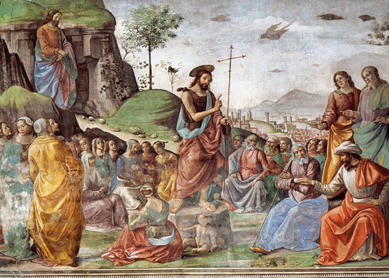Religious groups have often had trouble getting along with each other—whether they belong to the same tradition or a different one. Modern-day Bible scholars study the Johannine community for help in understanding interreligious squabbles.
What was “the Johannine community”? It was a network of churches located in Asia Minor responsible for the production of four New Testament writings: the Gospel of John and the three letters known as 1 John, 2 John, and 3 John. Together, those books reveal how a particular Christian community dealt with religious tensions during the last few decades of the first century C.E.
The Johannine community may have included Christians who migrated to Asia Minor from Palestine after the destruction of Jerusalem in 70 C.E. There is also material in the Gospel of John that would have been written or used by earlier Palestinian Christians when arguing religion with other Jews of Judea, including ones who had been followers of John the Baptist, sometimes understood as Jesus’s predecessor in ministry.
Some scholars think that tensions between members of the Johannine community and their Jewish neighbors became acute when a curse against “Nazoreans” (Christians) was added to synagogue liturgies. Thus, when the Gospel of John refers to people being put out of the synagogue for confessing Jesus to be the Messiah (see John 9:22 , John 12:42 , John 16:2 ) the point could be that such expulsions were occurring in the time and place when the Gospel was written rather than during the lifetime of Jesus himself (although it is possible that expulsions could have happened in both places and times).
But there are other theories too. Some scholars claim that the relations between Jewish and Christian communities were actually quite close at this time, such that tensions might have resulted from members of the Johannine community choosing to return to the synagogues. Perhaps the schism mentioned in 1John 2:18-25 involved the departure of community members who returned to the religious certainty of the synagogue rather than remaining in the more fledgling community with Gentile believers in Jesus.
Some critics also suggest that Jewish-Christian tensions can be overemphasized, since the Johannine community experienced problems in other arenas as well. Surely community members would have felt challenged when the Roman imperial cult insisted that everyone worship the emperor Domitian as “Lord and God” during his reign from 81 to 96 C.E.—for the community’s response to that expectation, see John 20:28 and1 John 5:21 . In addition, some Gentile Christian teachers apparently encouraged assimilation with the world, seeking to avoid suffering by teaching that Jesus himself did not suffer but had instead been only a spiritual being, not a flesh-and-blood human (compare 1John 4:1-3 , John 19:34-35 ). Finally, there were hierarchical struggles with other Christian communities, as is evidenced by their rejection by a church leader named Diotrephes, who “loved to be first” (3John 1:9-10 ).
Whatever tensions the Johannine community might have faced, the Gospel of John presents Jesus as praying for unity among his followers (John 17 ) and as insisting that they love one another (John 13:34-35 ). This “new commandment” in the Gospel becomes an old commandment in the Johannine letters (1John 3:11-4:12 ; 2John 1:5 ), indicating that concern for internal cohesion was a particularly prominent mark of this community from its founding to the end of the first century, when the Gospel was finalized.




